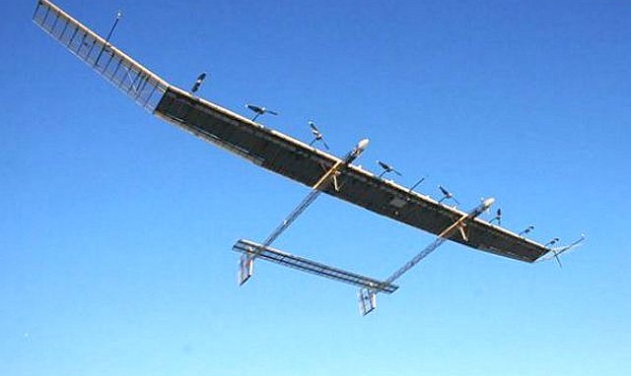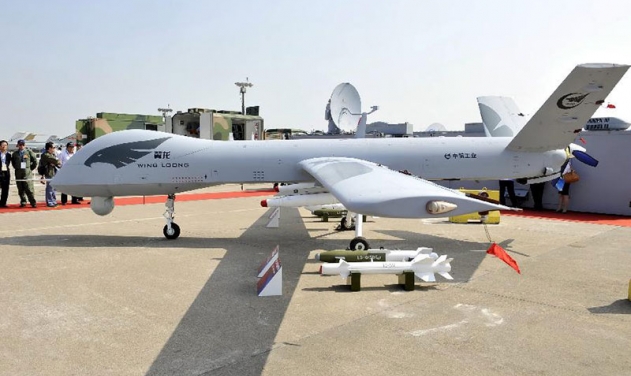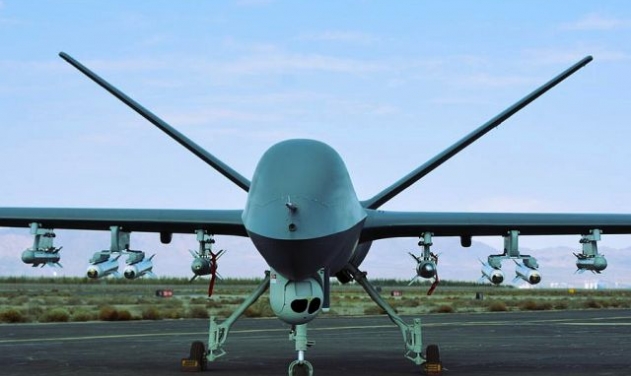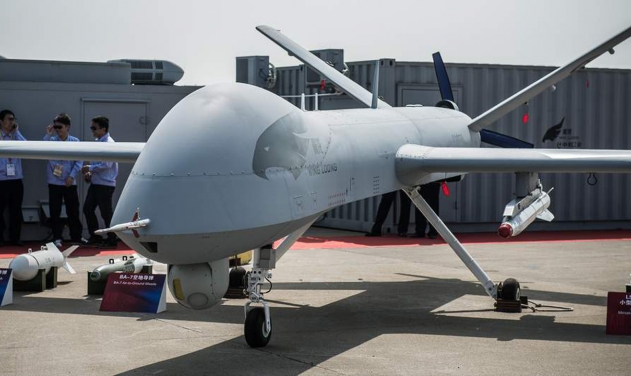China’s 'Solar-powered' UAV Test-fires 100 kg laser-guided bomb, Other Munitions

China's Caihong-4 (CH-4) solar-powered unmanned aerial vehicle (UAV) conducted a six-day multi-type ammunition live-fire test successfully in January in northwestern China.
While the Chiamil.com.cn report categorically mentioned the UAV as being 'solar powered,' the accompanying photo is that of a fossil-fueled UAV. A line in the later part of the report says 'enhanced CH-4;' it is not clear if the enhancement refers to equipping the UAV with an engine powered by solar energy.
In early 2017, reports had emerged that the China Academy of Aerospace Aerodynamics had tested a large solar-powered UAV, latest in the 'Caihong' series. There is no clarity if the weaponised drone tested was the solar-powered Caihong.
Images published in official chinese media at the solar-powered drone's first flight showed an eight-propeller drone with solar panels mounted on its wide and long wings.
The munitions tested included 50 kg cluster bomb, 50 kg terminal-sensitive projectile, 50 kg satellite-guided bomb, 100 kg laser-guided bomb and 100 kg satellite-guided glided bomb.
The 50 kg cluster bomb can implement blockades and kill hard-and-soft target. The 50 kg terminal-sensitivity projectile can destroy armor targets. Its infrared sensor can track thermal dynamic conditions in real time and its millimeter wave sensor can capture targets ultra-accurately, Chinamil website reported Thursday.
The 50 kg satellite-guided bomb can launch deadly attacks with pin-point accuracy using satellite navigation. The 100 kg laser-guided bomb can help CH-4 hit valuable targets while The 100 kg satellite-guided glided bomb can launch assault from over 10 km away.
CH-4 can mount different types of bombs at the same time and therefore it can implement efficient strike to more targets in longer distance and with faster response speed.
This live-fire test for CH-4 has laid a solid foundation for enriching the ammunition supporting scope for future models of this UAV series.
Shi Wen, chief engineer of the CH UAV, said that this enhanced CH-4 is developed based on the latest needs of customers. It provides a variety of task load mounting capability for multiple and potential users at home and abroad.
According to Shi Wen, the R&D team will carry out the joint flight test project of CH-3 and CH-4 to realize the functions of UAV formation operations, intelligence sharing and intelligence distribution and processing, just in order to provide users with a complete set of UAV solutions.













